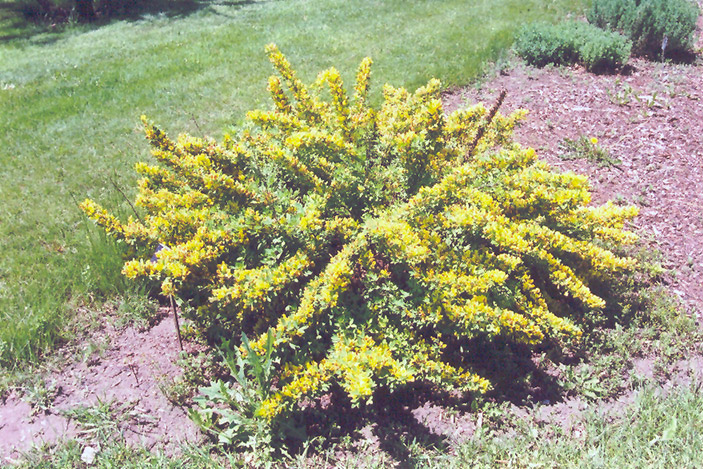Height: 3 feet
Spread: 3 feet
Sunlight:
![]()
Hardiness Zone: 4
Other Names: False Heather, Scotch Broom
Description:
Better known in European gardens than in North America, this compact shrub deserves to be more used here; this rounded shrub has spikes of radiant golden flowers protruding from the branches in late summer when few other shrubs are in bloom
Ornamental Features
Shrub Broom is clothed in stunning spikes of gold pea-like flowers rising above the foliage from late summer to early fall. It has emerald green deciduous foliage. The small compound leaves do not develop any appreciable fall colour. The lime green stems can be quite attractive.
Landscape Attributes
Shrub Broom is an open multi-stemmed deciduous shrub with a more or less rounded form. Its relatively fine texture sets it apart from other landscape plants with less refined foliage.
This is a high maintenance shrub that will require regular care and upkeep, and is best pruned in late winter once the threat of extreme cold has passed. Deer don't particularly care for this plant and will usually leave it alone in favor of tastier treats. It has no significant negative characteristics.
Shrub Broom is recommended for the following landscape applications;
- Mass Planting
- General Garden Use
- Groundcover
Planting & Growing
Shrub Broom will grow to be about 3 feet tall at maturity, with a spread of 3 feet. It tends to fill out right to the ground and therefore doesn't necessarily require facer plants in front. It grows at a medium rate, and under ideal conditions can be expected to live for approximately 15 years.
This shrub should only be grown in full sunlight. It prefers dry to average moisture levels with very well-drained soil, and will often die in standing water. It is considered to be drought-tolerant, and thus makes an ideal choice for a low-water garden or xeriscape application. It is particular about its soil conditions, with a strong preference for clay, alkaline soils, and is able to handle environmental salt. It is highly tolerant of urban pollution and will even thrive in inner city environments. This species is not originally from North America.

